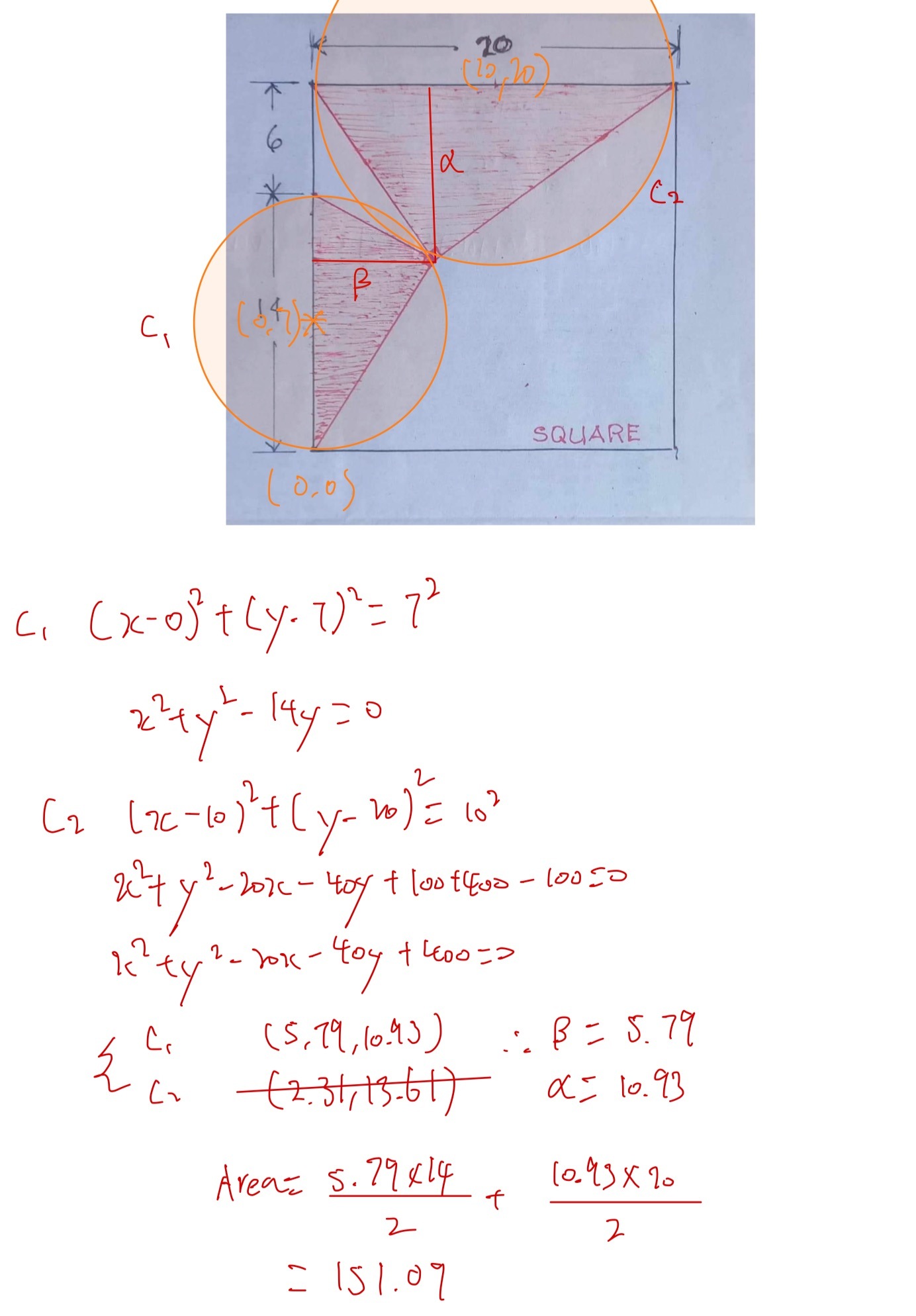
我敢講呢條中學數,連登至少一半人唔識
騎野豬的生菜公主
288 回覆
15 Like
414 Dislike
係計正方形周界

叫你計 15 + 6 等於幾多呀, 屌你老母 



邊長1 同 root24 嘅直角三角形都可以計到斜邊係5
let x y
可能計正方形外面 白色地方

7/24/25 5/12/13 ?
自己問題都比係到挑人骨頭

計square 面積有機會識

呢題D邊長要用簡尺度
太醜,唔睇
唔識計問功課?

細圓直徑唔係變數黎咩?
自膠無睇到14



次料不足, 無實數答案
只可以比公式答案
原因係個"直角點"可以係任意左上方, 唔過4方型對角線就可以無限變化
一係題目出錯, 一係題目係測量題
只可以比公式答案

原因係個"直角點"可以係任意左上方, 唔過4方型對角線就可以無限變化
一係題目出錯, 一係題目係測量題

佢幾時有講你岩



其實見到三角形有直角,已經第一時間諗到可以擺個圓形落去
之後圓形大把方法可以用


利申:會考數學拎B
之後圓形大把方法可以用



利申:會考數學拎B


??😂自己fc
Btw alpha係20-10.93
寫錯
寫錯
AI

To determine the shaded area, we can use the **Pythagorean theorem** to find the length of the diagonal line, which is the hypotenuse of the right triangle. Then, we can use the **area formula** for a triangle to find the area of the shaded region.
- **Pythagorean theorem**: a^2 + b^2 = c^2, where a and b are the legs of the right triangle and c is the hypotenuse.
- **Area formula**: A = 1/2 bh, where b is the base and h is the height of the triangle.
Using the given side length of the square (20), we can find the length of the diagonal line (c) as follows:
c^2 = 20^2 + 20^2
c^2 = 400 + 400
c^2 = 800
c = √800
c ≈ 28.28
Using the given numbers at the corners of the square (6 and 14), we can find the base (b) and the height (h) of the shaded triangle as follows:
b = 20 - 6 = 14
h = 20 - 14 = 6
Using the area formula, we can find the area of the shaded region (A) as follows:
A = 1/2 bh
A = 1/2 (14)(6)
A = 42
Therefore, the shaded area is approximately **42 square units**.


To determine the shaded area, we can use the **Pythagorean theorem** to find the length of the diagonal line, which is the hypotenuse of the right triangle. Then, we can use the **area formula** for a triangle to find the area of the shaded region.
- **Pythagorean theorem**: a^2 + b^2 = c^2, where a and b are the legs of the right triangle and c is the hypotenuse.
- **Area formula**: A = 1/2 bh, where b is the base and h is the height of the triangle.
Using the given side length of the square (20), we can find the length of the diagonal line (c) as follows:
c^2 = 20^2 + 20^2
c^2 = 400 + 400
c^2 = 800
c = √800
c ≈ 28.28
Using the given numbers at the corners of the square (6 and 14), we can find the base (b) and the height (h) of the shaded triangle as follows:
b = 20 - 6 = 14
h = 20 - 14 = 6
Using the area formula, we can find the area of the shaded region (A) as follows:
A = 1/2 bh
A = 1/2 (14)(6)
A = 42
Therefore, the shaded area is approximately **42 square units**.